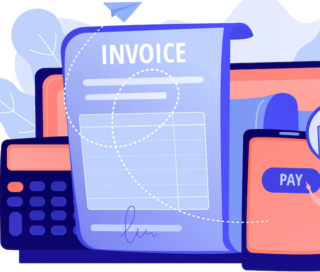Hailey Cheung
Hailey Cheung is a PCLL candidate at City University of Hong Kong with a Bachelor of Laws (LLB) from the University of Bristol. She has extensive legal experience, including roles as a Dispute Resolution Paralegal at Harneys, Student Advisor at the University of Bristol Law Clinic, and internships at Mayer Brown, Stephenson Harwood, and Zegal. A recipient of the Dean’s List International Scholar Award, Hailey also holds a Business Foundations Specialization from Wharton Online. She is passionate about legal advocacy and international trade.
Need any help? Contact us:

Table of Contents
Invoice discounting and factoring are both forms of short-term methods of invoice finance; and while they are both very similar, considerations should be made of the difference between the two.
The suitability of discounting or factoring for your company will depend upon the status of your credit collection and the efficiency of your accounts. In this article, we will look at the key differences between the two and how you can make a more informed decision on which method of financing to adopt.

What is invoice discounting?
Invoice discounting allows a company to borrow against outstanding invoices in order to sustain and improve its cash flow. Essentially, companies are able to sell outstanding invoices on a short-term basis to lenders in exchange for a cash advance. The value of the cash advance will reflect the percentage of the invoice’s unpaid amount.
The lender ultimately gives you the remaining cash balance after the invoice is paid off by the company’s client or customer. This is therefore a relatively simple and efficient way of injecting your company with working capital and improving its cash flow promptly.
As the granting of the cash advance is based on your company’s own system of accounts and client ledgers, your customer is unlikely to be aware of your relationship with the invoice discounting firm.
What is invoice factoring?
Similarly, invoice factoring involves selling outstanding invoices to a third-party financing company for a percentage of the total invoice value. Once the third-party finance business buys the invoice, they are in control of collecting and processing invoice payments.
As a result of the change of hands in handling money due, your customers will subsequently be aware of your relationship with the third-party firm.
In consideration of invoice discounting and factoring, you may therefore want to decide whether you want your customers to be aware of the fact that you are using their outstanding invoices as a form of short-term financing for your company.
Key differences between invoice discounting vs factoring
Visibility
As previously mentioned, one key difference between these two forms of short-term financing is your customer’s awareness of third parties involved with the handling of their invoices. When adopting invoice factoring, once the factor or third party finance company gets in control of your customer’s debt, they will actively chase payments.
While this means that your company will not have to deal with credit checking your clients directly, it also means that your customer will be aware of your agreement with the factor.
Conversely, with invoice discounting, your company retains all control of your customer’s invoices and accounts. While it may be time-consuming and arduous to ensure payments are collected, your customers will remain unaware of your agreement with the lender.
Value-added
When utilizing invoice factoring as a means of receiving short-term finance, third-party finance companies can give businesses up to 85% of the outstanding invoice submitted to them. This is comparatively less ambiguous than the value you would be receiving from invoice discounting.
The invoice discounting firm, when considering how much cash advance to provide, will look at the business’ systems and customers. It will then agree to advance a certain percentage of the total outstanding value of invoices holistically.
Control
Another factor to consider when choosing to adopt one of these financing methods is how much control you would like to retain over your company’s sale ledgers. Factoring involves selling the invoices to a third-party company that is then able to control sale ledgers and take responsibility for managing debts.
Alternatively, invoice discounting simply draws money out of outstanding invoices for which you still retain control. You will therefore remain in control of the administration of your ledgers and customers.
Risks involved with invoice discounting and factoring
At large, both invoice discounting and factoring are considered relatively secure and simple ways to raise capital and increase cash flow. However, as with all methods of short-term financing, there are risks to be aware of when adopting either invoice discounting or factoring to obtain funds.
When using invoice factoring, the third party factor company controls and manages the invoice amounts that are due to be collected. The lender, therefore, bears less of a risk in advancing cash on overdue invoices as they will be in control of due processes and can actively engage in demanding payments.
Acceptance is, thus, typically guaranteed. By the same token, invoice discounting is considered riskier for the lender as they will have no contact with the company’s customers and cannot guarantee payment from them. This method is, therefore, more commonly associated with well-established companies with a greater turnover rate and net worth.
Choosing which method of financing to adopt will largely depend on the nature of your company and control over its sales ledgers. It is also necessary to identify your company’s current needs and weaknesses such as an inability to adequately control credit or receive payments.
If you are unsure which method is right for your company, get in touch with our team of experts who can assist in making the right decision based on your business needs.
You Might Also Like:
Along with this document, make sure you see these other templates in our library:





